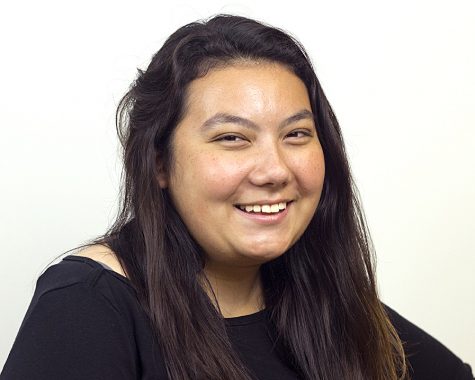Administration now looking at recommendations
January 19, 2018
Now that the Workgroup Review Committee has made its final report and recommendations public, the administration will begin to look over these suggestions and make changes in coming months.
The recommendations ranged from improving technology for students and faculty to changing Eastern’ s structure to having five colleges, including a new Health and Human Services as well as a STEM college.
These suggestions are based off those originally made by Workgroups No. 8 and 9 during the vitalization project.
In response to the five-college proposal, both Provost Jay Gatrell and Eastern President David Glassman said more feedback and research is needed to see if it is beneficial and worth the cost and effort of restructuring the university.
“In my mind, it’s not the size of the college,” Glassman said. “It’s, ‘How do we organize ourselves so that we get the best synergies taking place for instruction, student success, faculty interaction and also the recruiting interests of prospective students?”
As for the recommendations as a whole, Glassman said he hopes to start initiating the changes by April or May of this year.
He said right now the administration is in the review and feedback stage, where he and Gatrell are taking into account feedback from deans, department chairs and other campus organizations.
Next, the provost and his advisers will create a plan from the recommendations and the feedback that will be presented to the president’s council sometime in March.
After allowing faculty to review the second draft of recommendations created by the provost and his partners, a plan of action will start to be implemented in April or May, Glassman said.
Jay Gatrell, who brought this committee together in early October, said he was excited about the ideas present throughout this report and the discussion around it.
“What I am really enthusiastic about are sort of the themes that emerged (throughout the committee’s deliberations),” Gatrell said.
Included in the “further considerations” section of the final report was a proposal to start an ongoing “vitalization committee” that could plan for Eastern’ s future.
Glassman said this proposal seemed positive and grew out of the original thought process behind last year’s vitalization project.
“I think (starting an ongoing committee) is very positive,” Glassman said. “The vitalization project was developed to be dynamic, it wasn’t a one-shot thing of ‘let’s look at ourselves, let’s create something, and then make changes and stop.’ We’re always trying to vitalize our campus, we’re always trying to stay current and provide … the resources associated with student success.”
Workgroup review committee chair Billy Hung said the idea of an ongoing vitalization committee was brought to a Faculty Senate meeting.
“Even though it seems like a lot of the senators are sympathetic to the idea that such an entity should exist we haven’t really decided to make it happen,” Hung said.“Once we decide to make it happen, we’ll get into details of who gets to be on it,what’s the reach and scope, how should it operate.”
Hung said part of the reason the idea for this vitalization came up was because higher education is changing, and some issues that come up require a more collective response.
“Something like this committee can (respond) to those changes, and come up with ideas and suggestions, (and investigate) the issue, bringing people across campus to talk about it and come up with kind of a campus response,” he said.
This committee would also look into the future, looking at trends and changes in higher education.
Hung said this means thinking about what Eastern’s place is in this larger picture, while still keeping the university’s mission and characteristics in mind.
Another recommendation the Workgroup Review Committee put forth was combining student academic support services into a “one-stop shop,” with a University College concept.
This college would combine the Honors College, CASA,TRiO, Gateway, Advising, the Student Success Center, Office of Study Abroad, Office of Student Disability Services, Student Success Center and Office of International Students and Scholars in one area.
Richard England, dean of the Honors College, was on Workgroup No.9, which looked at the possibilities of unifying the student services on campus.
He is also on a student success workgroup the provost called together to look at these services, where the idea of a “one-stop shop” for student services has also come up.
England said there are possibilities to combining these programs, as there are some overlaps to entities such as the Honors College and other student services, but there are also differences to them.
“It’s certainly a conversation I’m willing to have in future, but for right now I’m reserving judgement,” he said.“It really depends…on what that would look like, what kind of administrative structure would best serve all students. We’ll have to see what the different stakeholders in that think about the way they can work together.”
England said the question is what brings academic and student services together under one umbrella.
“If it coordinates well, if it fits well, great. If it doesn’t (then you think) what are some other ways you could organize these services?” he asked.
The idea of increasing interdisciplinary initiatives, such as team
teaching, course sharing and course cross-listing, was listed as a possibility as well.
Part of this recommendations includes a collaboration between Administration and UPI to re-evaluate credit units for team teaching.
“There are areas that lend themselves to interdisciplinary collaborations,” Hung said. “Having team teaching, cross listing options would be helpful. That’s why we recommend the president provost look at that make concerted effort to make that happen.”
Currently, Hung said, it can be hard to make team teaching happen, as it can take a lot of administrative work.
“That needs to have input from both the union and administration to create a new model where something like that could happen,” he said.
EIU-UPI President Jon Blitz said he does not know whether this issue will be discussed between the faculty union and administration, though this spring would seem like like a logical opportunity to do that as negotiations will be taking place.
Though the issue of credit units is not in the contract, it is talked about in the assignment of duties, so it carries contractual weight.
“If the administration wants to promote team teaching opportunities, this seems like good way to do that,” Blitz said.“Those (credit unit) guidelines are probably first place I would go to change things to make it more sweeten the pot for faculty to do (more team teaching).”
There is already a system in place regarding credit units and team teaching.
As it is now, each instructor will receive a percentage of the credit units normally assigned to a course, depending on how many people are teaching it.
In a class with two instructors, each would get 75 percent. A class with three instructors would give each 60 percent of the credit units, while a class with four instructors would give them 50 percent.
Brooke Schwartz and Cassie Buchman can be reached at 581-2812 or [email protected].




















































